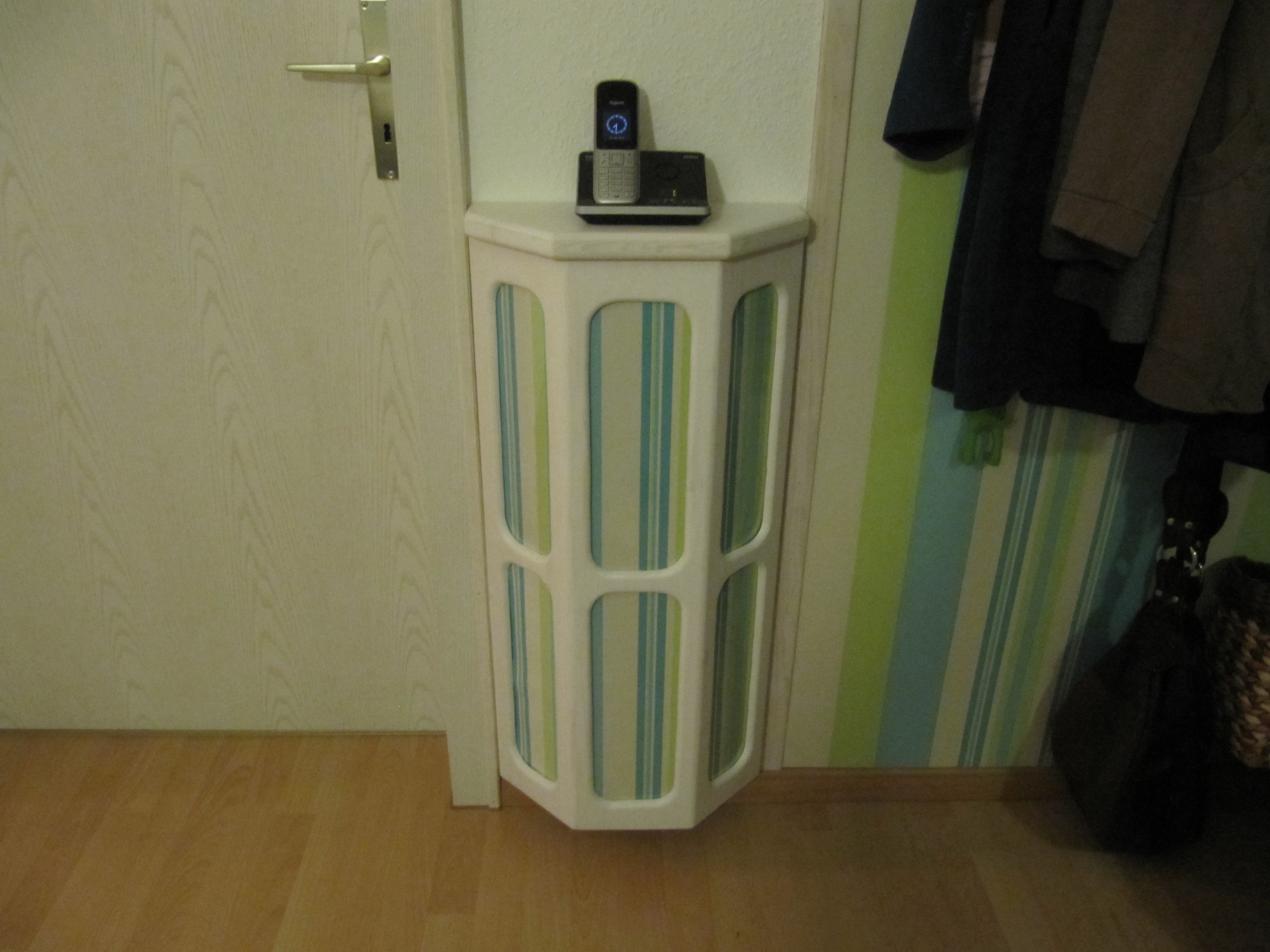This next step is complicated to explain. First glue a rib on top and bottom of the 80×60 board to enlarge the hinge area.
Then determine the correct angle to cut out the hinge hole by laying the door onto the 80×60 board and holding the hinge onto it. Note that the hinge has to be placed so that the door closes with a little bit of pressure remaining.
Cut the marked part out of the 80×60 board. As this cut has a difficult angle, I used a hand saw. Make the hole large enough so that you can reach the hinge screws from the back when the door is closed.
Now finally join the door and the back part with the hinge. As the wood is very thin near the hinge, drill holes before placing the screws. Test to make sure you can open the door.

